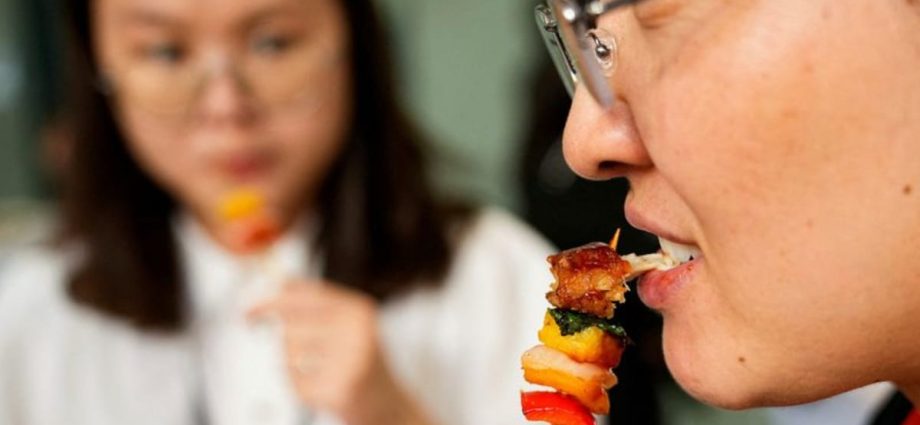
SHANGHAI: In an unassuming industrial park on the outskirts of Shanghai, an unusual taste test was happening.
As part of an event on Wednesday (Aug 9) for government, investors and media, the cultivated meat company CellX served up meat developed in a laboratory from animal cells.
The offerings included lab-grown lamb kebabs and tofu with minced lab-grown lamb. CellX said each dish costs less than 100 yuan (US$13.87) to produce.
The company, founded in 2020, is among a handful of front runners in lab-grown meat production in China. There are also several other companies focusing on research and development.
They are part of a race globally to develop commercially viable lab-grown meat and fish products to appeal to consumers concerned about the environmental impact of livestock farming, a major source of greenhouse gas emissions.
“Our costs are at around US$100 per pound (0.45kg), but by the time we commercially launch in two or three years, the price could go down 10 times,” CellX CEO Ziliang Yang said.
The firm opened a pilot facility in Shanghai this week that Yang said can produce “a couple of tonnes” of cultivated meat a year. The next facility, for commercial production, is expected to be constructed by 2025 and has the capacity to produce hundreds of tonnes of meat a year.
Though US$100 per 0.45kg marks significant progress in terms of cost from the first lab-grown hamburger, which cost US$330,000 to produce in 2013, it’s also a long way from the cost needed to be competitive with traditional meat products.
That needs to reach US$2.92 per 0.45kg to be price competitive, according to Leticia Goncalves, president of global foods at grains merchant Archer-Daniels-Midland, which has invested in cultivated meat companies.
With Singapore and the US leading the world in terms of regulatory approvals for the retail sale of lab-grown meat products, Yang says CellX will file applications in both countries this year with the aim to start selling its products, initially in restaurants, by 2025.
China is an attractive market for cultivated meat sales given it consumes more meat than any other, reaching almost 100 million tonnes in 2021. But there is no indication when regulators might approve lab-grown meat for human consumption.
Still, the promise of China as a low-cost manufacturing base for cultivated meat is equally exciting, Yang said.
The cost of bioreactors, where the meat is grown, in China is significantly lower than in the US or Europe, and the government has offered generous incentives to industry players since cultivated meat was included in the agriculture ministry’s 14th five-year plan last year.
“At the end of the day, producing in China means having that infrastructure at a relatively lower cost and this is a key advantage,” Yang said. “It’s really going to be about leveraging that supply chain and going overseas, that’s the story as we see it.”

